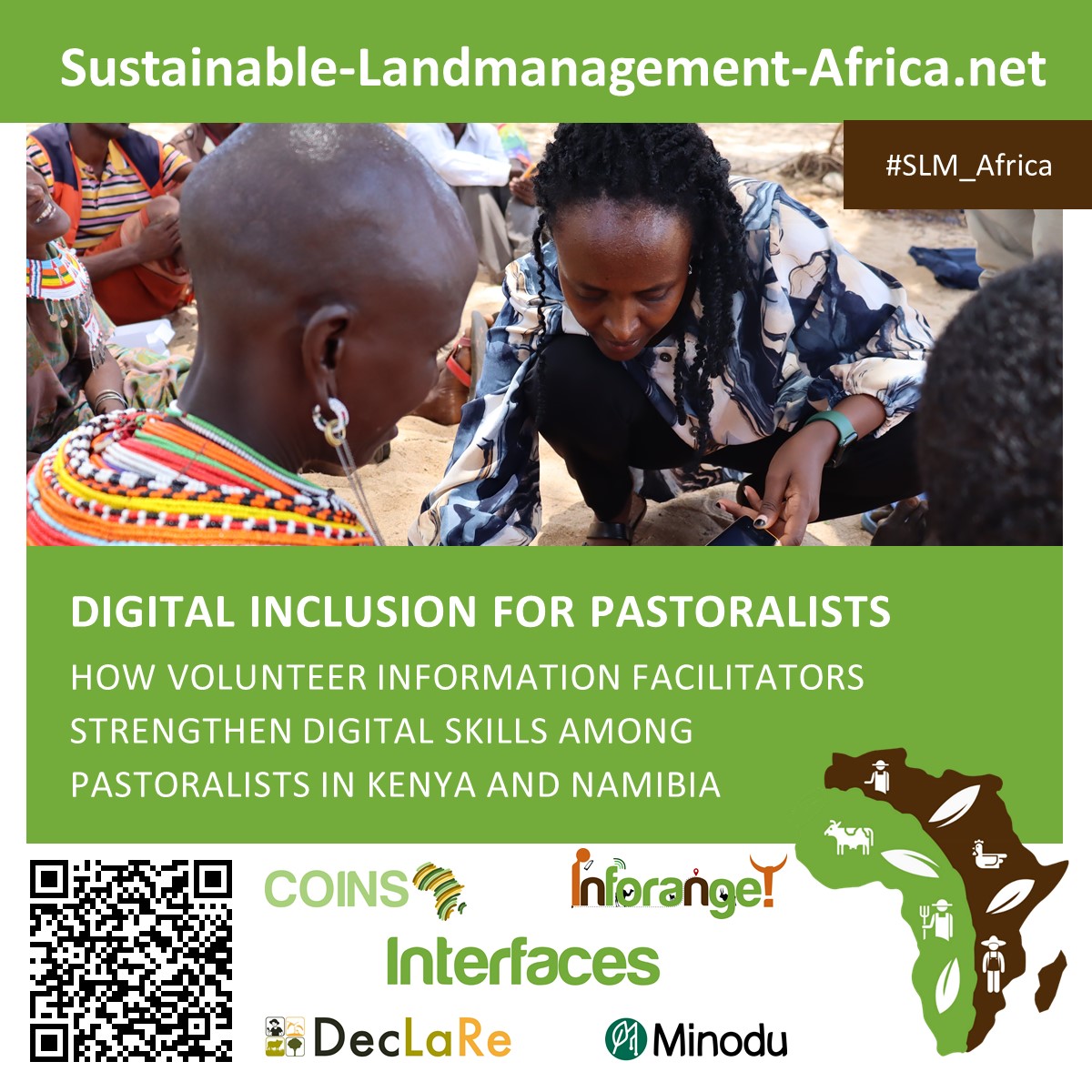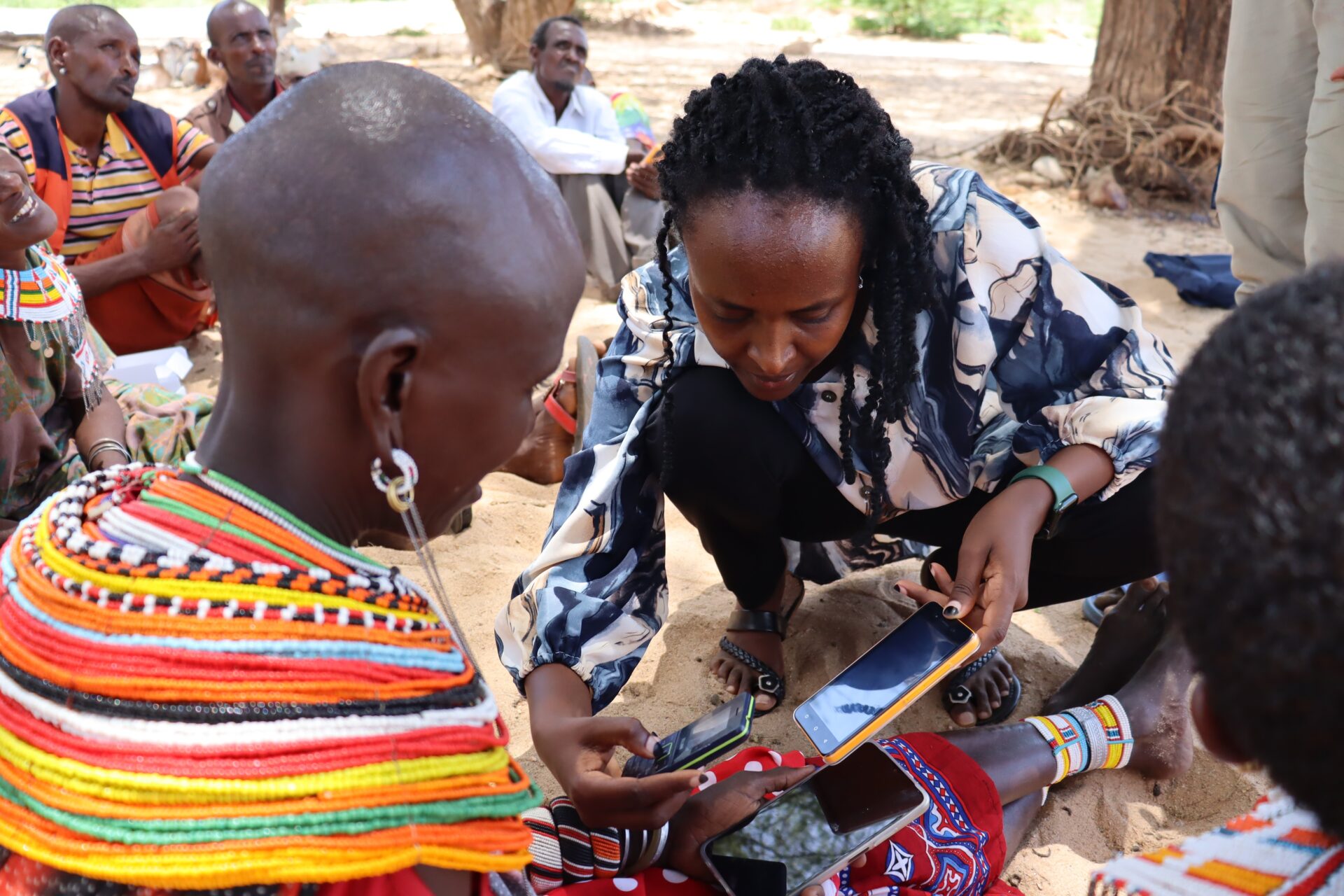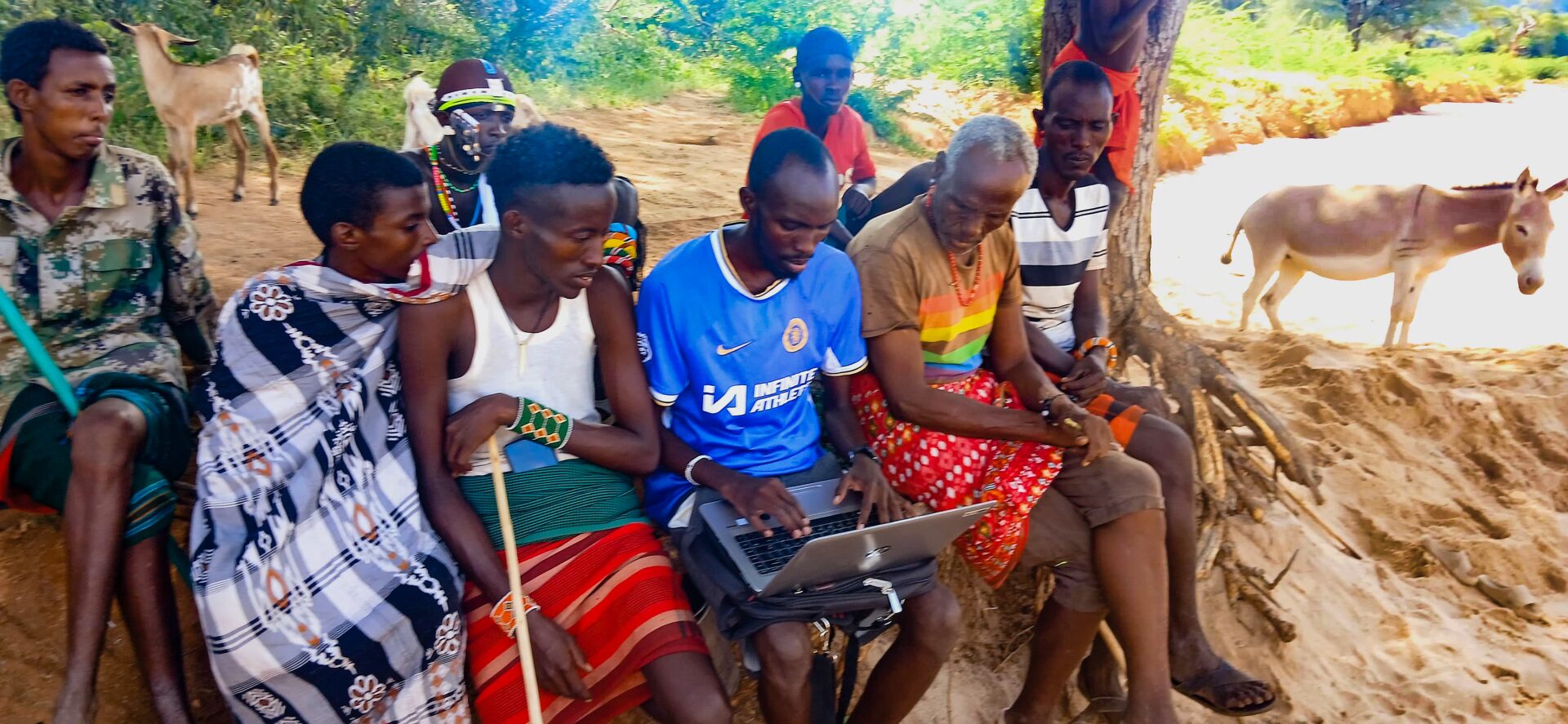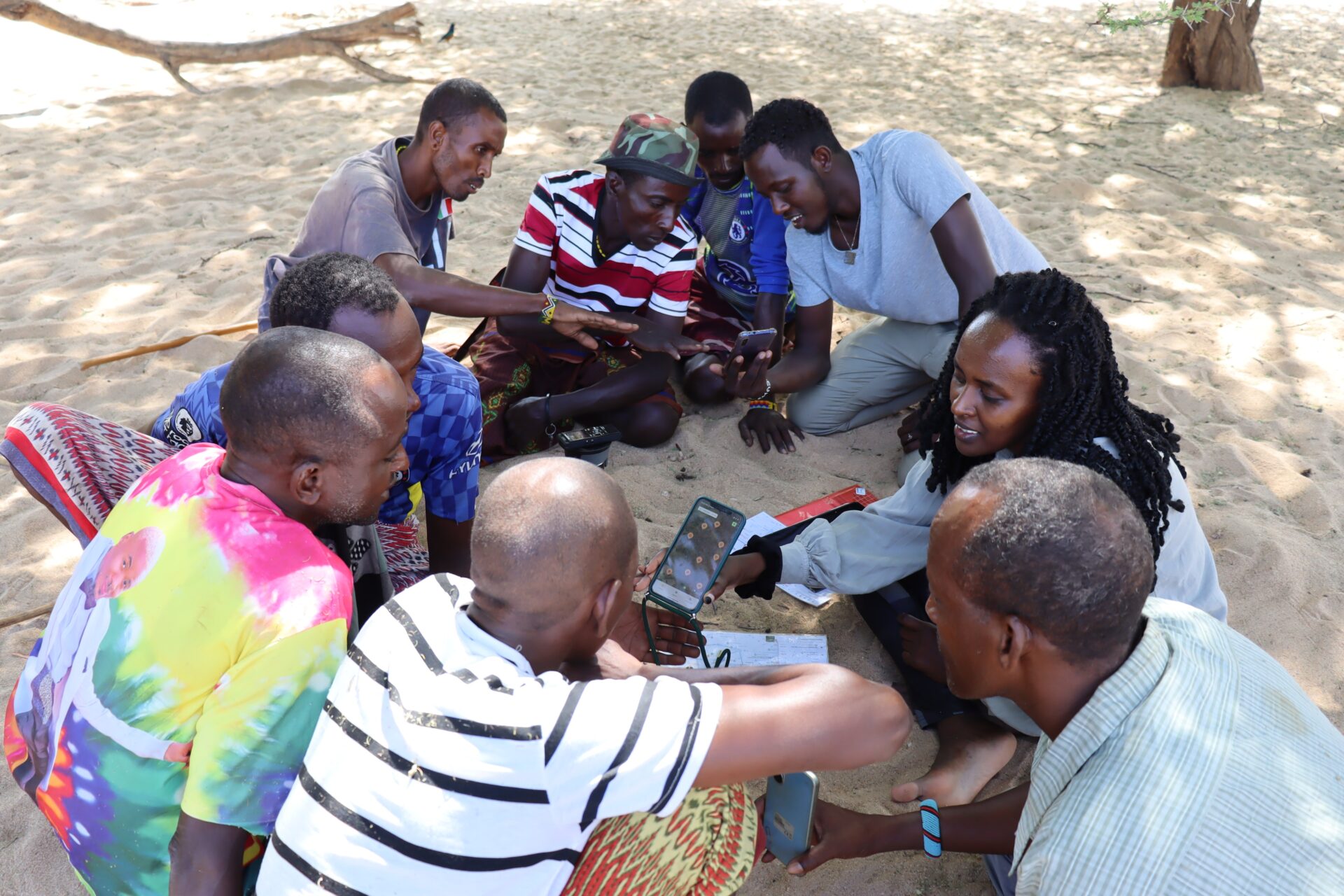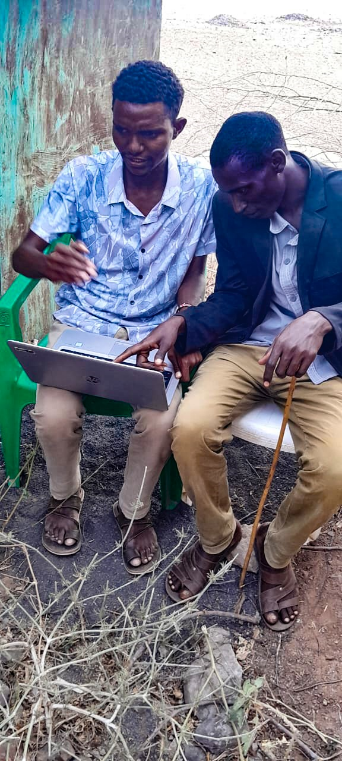Digital Literacy as a Foundation for Co-design of the InfoRange app
For the app to be developed in collaboration with pastoralists and to reflect their needs and local context, it is vital that they—with the support of the VIFs—gain an understanding of what information is available online, how digital tools can be used, and what challenges or risks may arise. This allows them to give meaningful input when shaping the app’s functionality, ensuring its relevance and practical usefulness.
The app is expected to provide reliable real-time information in key areas such as grazing monitoring and animal health, as well as access to veterinary services. These features are informed, among other things, by the VIFs’ monthly reports to the research team, which document the queries they receive from community members whereby providing insights into the digital information needs of the communities.
Since the VIFs started their work in Kenya in July 2024, the most frequent requests have been for information on livestock diseases, animal nutrition, marketing, and human health. According to Rufo Compagnone, a PhD student on the InfoRange project, such queries do not necessarily indicate a lack of knowledge. Rather, herders actively seek to compare digital content with their own experiences, also using it to assess the potential and reliability of digital tools.
Joint Selection Process Ensures VIFs Meet Pastoralists’ Needs
To ensure that the VIFs are well-suited to the needs of the communities, their selection was designed to be participatory from the outset. The InfoRange team actively involved representatives of the pastoralist communities in the recruitment process, aiming to ensure both cultural compatibility and technical competence.
In Kenya, for instance, community members suggested placing printed announcements in high-traffic areas such as market centres and the chief’s office to maximise outreach. This approach was successful: 71 people applied, and a shortlist was invited to attend in-person interviews.
Community representatives also played a central role in the selection procedure. They contributed to developing interview questions and were involved in assessing candidates. Interviews evaluated previous experience, language skills, and digital competencies. In a practical test, candidates had to use a laptop and internet access to research online and respond to example queries posed by herders.
Final selection was made jointly based on criteria such as language proficiency (in English and local languages), digital skills, familiarity with local social and cultural contexts, and a commitment to inclusion and gender equity.
VIFs Receive Training to Prepare for Their Role
Before they began their work, the VIFs underwent targeted training sessions designed and conducted by members of the InfoRange team, such as the MSc student Keerthana Sri, who studied information needs of pastoral women for her thesis. These sessions not only introduced the aims and the participatory approach of the project but also specifically prepared the VIFs for their role as facilitators of digital skills.
In both project regions—northern Kenya and northern Namibia—the training covered internet search functions, evaluating trustworthy sources, techniques for data documentation, and research methods related to topics such as livestock health. Another major focus was on communication skills, especially for building trust. The VIFs practised real-life scenarios and were encouraged to reflect on what they had learned and adapt it to their local context.
For example, during the training, Mpule Kamwi, a staff member of the Namibia Nature Foundation (NNF), asked the VIFs: “As a VIF, you have an appointment with farmers in a particular village, but upon arrival, you discover there is a funeral. What steps will you take?” To address such situations sensitively, Mpule and her colleague Rakel Johannes facilitated role-playing exercises that demonstrated respectful conduct according to Otjiherero traditions, customs, and norms. These exercises gave the VIFs clear guidance on how to respect local standards, which is essential for VIFs to work effectively
An additional course focused on teaching digital skills to adults with limited literacy. This practical training combined technical knowledge with didactic methods thus equipping the VIFs to support individuals with little formal education in using smartphones.
Challenges and Perspectives
Many herders involved in the InfoRange project have shown great openness to digital technologies and are enthusiastic about the opportunities that smartphones and internet access offer for their daily lives. At the same time, community members have highlighted specific barriers to broader use of digital tools. A key obstacle in both study areas is the cost of mobile data, especially for households with limited financial resources. Access to power is also a challenge in remote areas without an electricity grid connection. Solar chargers could ensure reliable device use, but are still costly.
VIFs in Namibia face additional logistical obstacles. Vast distances between villages and limited public transport make community visits difficult. To overcome this, VIFs have learned to focus their activities around pension payment days at central locations, ensuring maximum participation and outreach.
Working with VIFs has revealed that sustainable digital inclusion occurs when communities take the lead in their learning journey. Peer-to-peer learning creates a natural multiplier effect where confident users spontaneously support beginners, extending impact far beyond formal training. By placing ownership in the hands of communities, the VIF model demonstrates that true digital empowerment is not about bringing technology to communities, but about empowering them to integrate technology on their own terms.
